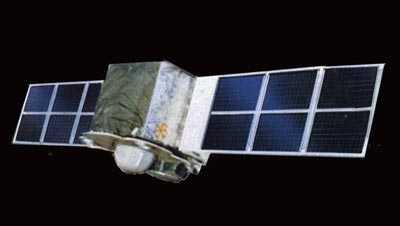Space weapons debate: clarity versus Gebetsmuhlenartigby Taylor Dinerman
|
| Above all this means that the US will have to begin to seriously debate active defenses for our satellites. |
One Air Force source pointed out the following: “As long as any country has the ability to loft a kill vehicle above the atmosphere and is advanced enough to use small engines to enable a kill vehicle to strike a satellite then it is possible. Another way to look at this is if amateur rocketeers can launch small cheap rockets into space that they build in their garages why can’t China use an MRBM [medium-range ballistic missile]?” In fact no amateur group or small company has yet managed to launch a missile into orbit, but may soon change. The technology and the skill needed to send a rocket into orbit is spreading and there is little, if anything the US can do about it.
This was no amateur or low-cost program, though. Another source explained that the Chinese have been working on this for the last twelve years and have already conducted at least one precursor test. Official Chinese statements, such as “The international community should negotiate and conclude the necessary legal instrument as soon as possible to prohibit the deployment of weapons in outer space and the use or threat of use of force against objects in outer space so as to insure peace and tranquility therein” from the 2002 Chinese Defense White Paper were merely eyewash.
One recognized expert on China’s military space program said that “This has as much to do with the national space policy as Russia’s decision to build the MiG-25 had to do with the US F-15.” China believes that information is the key to winning future wars and, since it flows from and through space, that is where the crucial battles will be fought. This reality is something that many in Washington, particularly in the diplomatic and intelligence communities, tried to ignore. Seriously thinking about a US-Chinese conflict in space, or anywhere else, is not a pleasant exercise.
The target for this test was the old Feng Yun 1C (FY-1C) weather satellite launched in 1999 on a Long March 4B rocket. It circled the Earth in what is called a Sun-synchronous polar orbit, passing over territory at the same local time each day. This is the same orbit used by civil remote sensing satellites and by military reconnaissance satellites. FY-1C was at about the same altitude as the US spy satellites. Since the US has only three or four Advanced Keyhole KH-11 spacecraft, each one costing at least a billion dollars, the threat from China’s new weapon is unmistakable.
| On space weaponization, as on other issues, the US faces what might be called a “B.S. Gap”. Of course, our government’s spokesmen use it, just not very well. |
This test will inevitably impose costs on the US. Future military satellites in low Earth orbit (LEO) and beyond will have to be prepared to survive kinetic ASAT and other kinds of attacks. This means they will have to carry more fuel for maneuvering and more shielding; this in turn will make them bigger and heavier and thus more costly to launch. This also means that the Pentagon will have to look at the option of having “in-space” spares. These would be satellites that are already in space, in hard-to attack-orbits, that can be made operational in case the primary operational satellites are knocked out.
Above all this means that the US will have to begin to seriously debate active defenses for our satellites. These could include lasers, radio frequency jammers, high-powered microwave systems, or kinetic weapons. These systems could be attached to large US military satellites or could be placed on a new class of “escort satellites”. These weapons would also have inherent offensive anti-satellite capabilities.
On space weaponization, as on other issues, the US faces what might be called a “B.S. Gap”. Of course, our government’s spokesmen use it, just not very well. America fails to speak to the world with what the Germans call “Gebetsmuhlenartig”, which literally translates to “Tibetan prayer wheel like” and is described as “empty, obligatory phrases that litter political discussion.” The similarity between Congressman Markey’s language and that of the Chinese military white paper derive from the same “prayer wheel” source. In contrast, the language of the national space policy is as clear as crystal. We have to be prepared to fight and win wars beyond Earth’s atmosphere. Plain language is necessary for effective military doctrine, but in the era of the “Dialogue of Civilizations” it is damned as “insensitive”.
